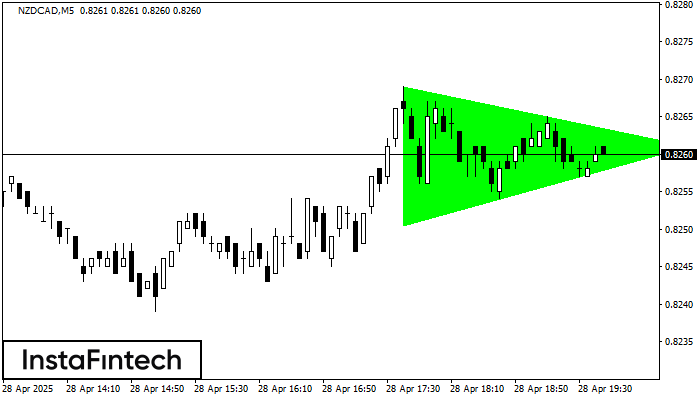Bullish Symmetrical Triangle
was formed on 28.04 at 18:45:20 (UTC+0)
signal strength 1 of 5

According to the chart of M5, NZDCAD formed the Bullish Symmetrical Triangle pattern. The lower border of the pattern touches the coordinates 0.8250/0.8261 whereas the upper border goes across 0.8269/0.8261. If the Bullish Symmetrical Triangle pattern is in progress, this evidently signals a further upward trend. In other words, in case the scenario comes true, the price of NZDCAD will breach the upper border to head for 0.8276.
The M5 and M15 time frames may have more false entry points.
Figure
Instrument
Timeframe
Trend
Signal Strength







